The letter Ṭāʼ (ط) is one of the distinctive letters in the Arabic language. It is pronounced as an emphatic explosive sound, which can be difficult for some learners to articulate and write accurately at first. It is important for students to learn the different forms of the letter Ṭāʼ based on its position in the word, in order to read and write it correctly. In this lesson, we will explore how Ṭāʼ appears at the beginning, middle, and end of words, with examples to help learners visualize and remember its shape.
The Letter Ṭāʼ (ط) and Its Forms in Arabic Words
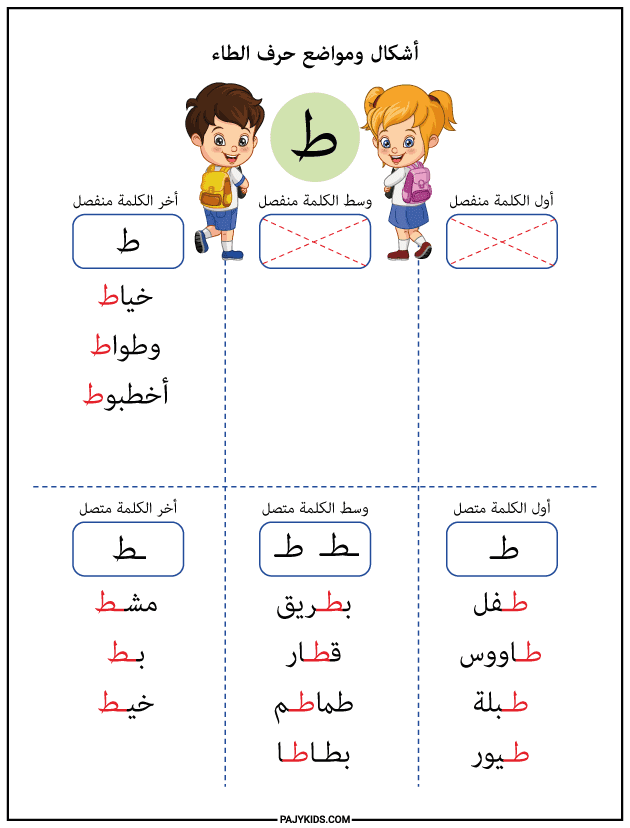
- Form of Ṭāʼ at the Beginning of a Word
When Letter Ṭāʼ appears at the beginning of a word, it connects only to the following letter and takes the form: “طـ”.
Examples: ṭifl (طفل), ṭāwūs (طاووس), ṭabla (طبلة).
This form features a single dot above the letter and a slight horizontal extension. It’s important to pay attention to the size of the lower part and the distinctive curve of the letter.
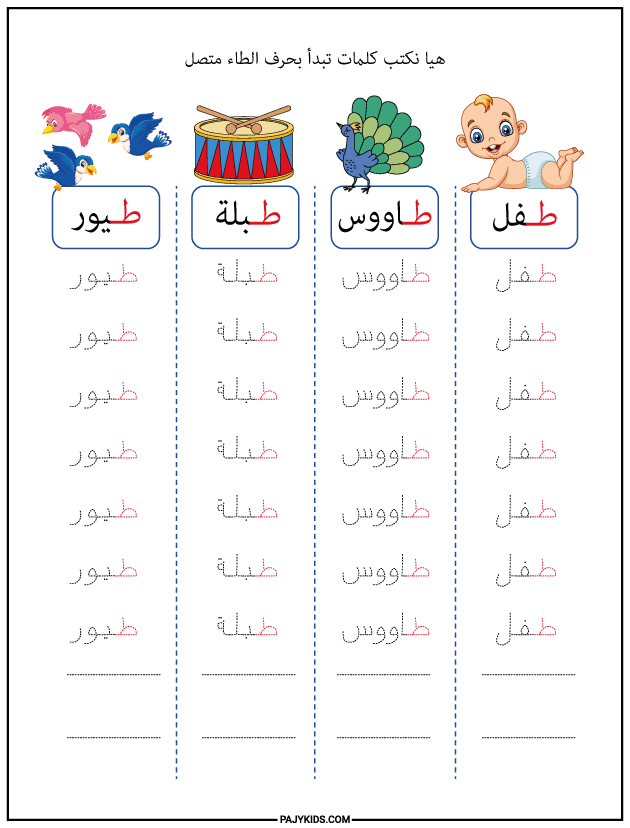
- Form of Letter Ṭāʼ in the Middle of a Word
When Letter Ṭāʼ appears in the middle of a word, it connects to both the preceding and the following letters and is written as: “ـطـ”.
Examples: baṭrīq (بطريق), qiṭār (قطار), ṭamāṭim (طماطم).
In this position, the letter merges with the surrounding letters while maintaining its clear structure and the dot above it.
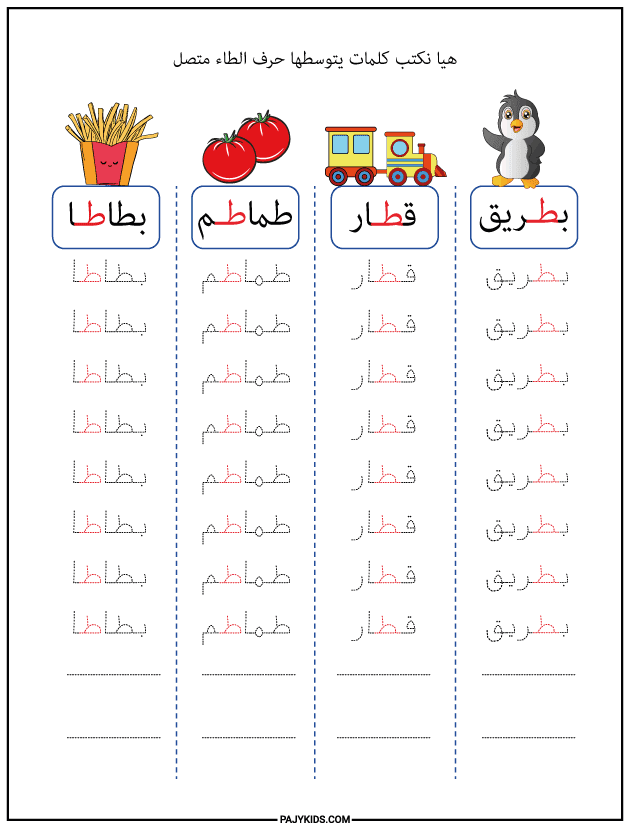
- Form of Ṭāʼ at the End of a Word (Connected)
When Letter Ṭāʼ comes at the end of a word and is connected to the preceding letter, it takes the form: “ـط”.
Examples: mishṭ (مشط), baṭ (بط), khayṭ (خيط).
Even at the end of a word, this form of Ṭāʼ remains attached to the baseline and retains its full shape, including the dot above it.
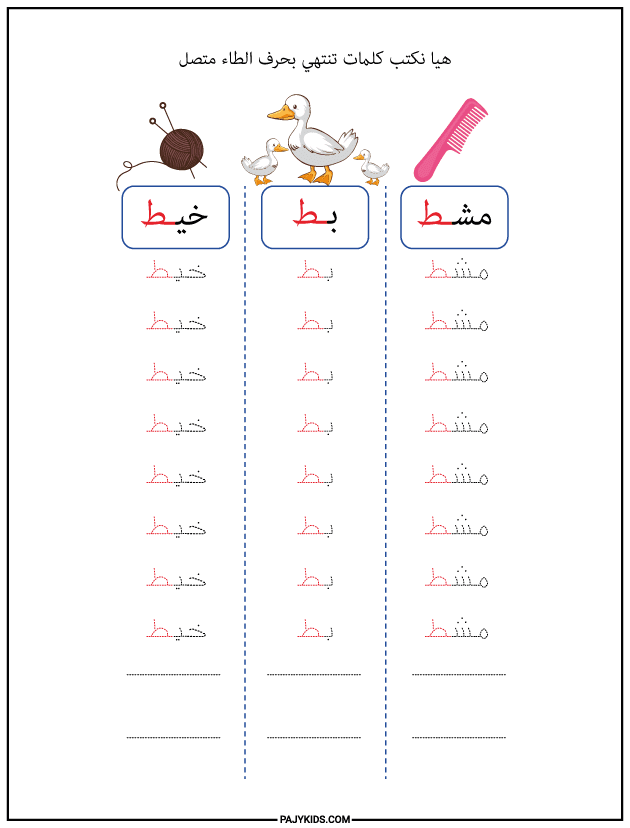
- Form of Ṭāʼ at the End of a Word (Isolated)
If Letter Ṭāʼ appears at the end of a word following a letter that does not connect, it is written in its isolated form: “ط”.
Examples: khayyāṭ (خياط), waṭwāṭ (وطواط), akhṭabūṭ (أخطبوط).
This form sits on the baseline, with its recognizable curve and the distinctive dot placed above the letter.
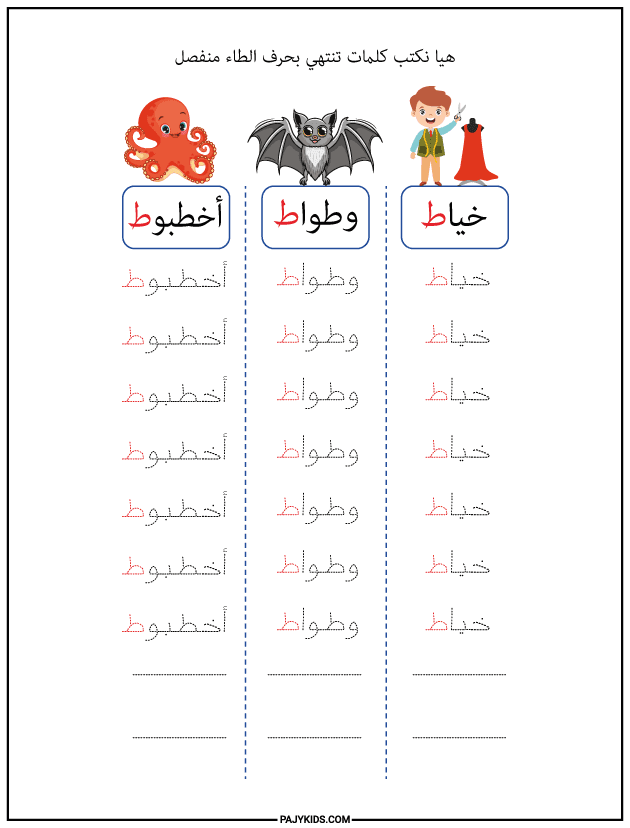
Mastering the forms of the letter Ṭāʼ helps improve students’ writing skills and enables them to distinguish between visually similar letters, such as Tāʼ (ط) and Tāʼ marbūṭa (ة) or Tāʼ (ت). Understanding the shapes of Ṭāʼ enhances reading fluency and helps learners grasp the meaning of words based on the letter’s position. Practicing how to write Ṭāʼ in its different positions is an essential step in properly learning the Arabic alphabet.